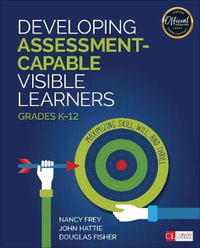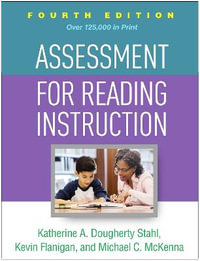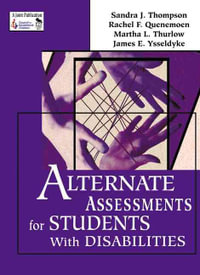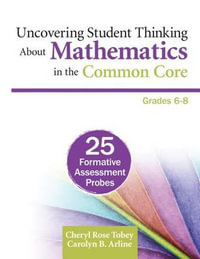Foreword Acknowledgments List of Contributors About the Authors Chapter 1. Introduction to #assessmentliteracy Assessment Literacy Classroom Assessment: A Brief History of the Impact of the Field Classroom Assessment: Today's Dialogue About High-Impact Practices and Strategies The Era of Rapid Response: Our Concerns About the Commercialization of Formative Assessment Assessment Literacy: It's About the Teachers and Their Leaders Chapter 2. Contextualizing Assessment Within Curricula and Instruction WHY, WHAT, and HOW Backward Planning in a Proficiency-Based or Standards-Based Context Designing Forward and Backward Assessment Traps Need for Assessment-Literate Leaders What Is Effective School Leadership? Types of School Leadership Conclusion Chapter 2 Appendix: U.S. History Assessment Task and Rubric Chapter 3. The Convergence of Research and Practice: Seven Strategies of Assessment for Learning Meets High-Impact Strategies Learning Progressions for High-Impact Assessment for Learning Strategies: From Surface to Deep Practice Conclusion Chapter 4. Clear Learning Targets: Clarity Is the Goal! Clear Learning Targets: The Progression of Strategies for High Impact Curriculum Context for Clear Learning Targets A Primer on Cognitive Models: Identifying, Organizing, and Communicating Clear Learning Targets From Standards Documents Classroom Strategies to Influence Clear Learning Targets: From "As Is" Standards to "I Can . . . This Means" Statements Learning Progressions A More In-Depth Look at Clear Learning Targets Using Next Generation Science Standards as an Example Concept Maps and Deconstructing Standards Combining Clear Learning Targets Strategies Concerns About Creating Learning Progressions: Avoid the Traps Grading, Scores, and Learning Progressions Conclusion Chapter 5. Mapping, Visual Literacy, and Assessment for Learning What Is Visual Literacy? Why Is It Important? High-Impact Visual Learning Strategies: Mind Mapping, Concept Mapping, and Visual Representations Primer: What Is a Mind Map? Primer: What Is a Concept Map? Mind Mapping in Practice Concept Maps in Action Using a Concept Map to Make Comparisons and to Understand Similarities and Differences of Concepts Graphic Organizers + Concept Maps + Sketches = Fluent Visual Literacy Conclusion Chapter 6. Putting Feedback Into Action Giving and Receiving Feedback: Creating a Culture Receptive to Feedback Using Objects to Understand How One Prefers to Receive Feedback Educators Need and Deserve Formative Feedback, Too! Conclusion Chapter 6 Appendix: Earth-Sun-Moon System Pre-Self-Assessment and Teacher Feedback Case Study Chapter 7. Metacognition, Self-Assessment, Goal Setting, and Reflection: GPA Matters! (Goals, Plans, and Actions, That Is!) Meet Our Friend Ed Fully Developed Rubrics The Next Steps Rubric: A Bridge Between Standards and Fully Developed Rubrics Clear Learning Targets Descriptive Feedback Self-Assessment and Goal Setting Working in Concert With Fully Developed Rubrics How and When to Use the Next Steps Rubric for Maximum Impact Linking Metacognition and Student Success The Anatomy of the Next Steps Rubric: Form, Function, and Flexibility Educators Benefit From the Next Steps Rubric, Too! Summary of the Next Steps Rubric Other Self-Assessment, Goal Setting, and Reflection Tools Conclusion Chapter 8. Diagnosing Student Learning Needs During the Learning Process Using Questions to Diagnose and Improve Student Learning Why Use Questioning? What Does the Research Say About Questioning? What Can I Do to Improve My Questioning Skills, You Might Ask? Teaching Productive Discourse: Using Classroom Discussions Effectively to Diagnose Learner Needs Visual Thinking Strategy: Classroom Discussion Protocol Conclusion Chapter 9. The Whole Learner and Nothing But the Learner A Key Standard of Quality: Assessment-Literate Learners So, What Else About the Learner? Deep Dive: What Is Grit? Metacognitive Learning Strategies-A Deep Dive Metacognitive Learning Strategies in Practice-From 21st Century Skills to Habits of Work and Learning Learner's Attributes and What She or He May Be Thinking Mindset Celebrating Errors and Mistakes Self-Handicapping Deep Dive: Encounters With Learners Conclusion Chapter 9 Appendix: Metacognitive Strategies: Definitions, Effect Sizes, and Examples Chapter 10. High-Impact Professional Learning Principles and Communities of Practice: Let's Get It Right! Standards for Professional Learning Conclusion Chapter 11. Professional Learning Strategies and Tools for Creating Assessment-Literate Educators Common Language and Vetted Resources Interactive and Immersive Learning Strategies Self-Assessment, Goal Setting, and Reflection Tools and Strategies Simplify Sources and Displays of Evidence (Quicker Prompts) Use of Modules: Bite-Sized Professional Development Grow Assessment-Literate Leaders Within and Outside of One's District and/or Partnership: Creating a Partnership of Partnerships Finding the Sweet Spot: Embed Assessment Literacy Into Other Professional Development Initiatives: It Is the Plate! Conclusion Chapter 12. Assessing Student Growth and Teacher Effectiveness Overview of Foundational Skills for Sound Assessment of Student Growth and Proficiency Assessing What Matters Most in Social Studies-Historical Thinking Example: A Case Study in Student Growth Models Conclusion Chapter 12 Appendix: Historical Thinking and Summarizing Chapter 13. The #assessmentliteracy Challenge Take a Creative Deep Dive: Express-a-Book, Video, Podcast, or Article Following the Flow of Ideas and Finding Your Happy Place What Will Be Your Next Steps in Your Assessment Literacy Journey? Chapter 13 Appendix A: What Is Quality? High-Impact Teaching Strategies Meet Zen and the Art of Motorcycle Maintenance by Robert Pirsig (1974) Chapter 13 Appendix B: Art, Fear, and High-Impact Teaching and Learning Strategies References Index
























